Cover
Title Page
Copyright Page
Contents
Preface
Acknowledgments
Chapter 1: The Java SE 8 Stream Library
1.1 From Iterating to Stream Operations
1.2 Stream Creation
1.3 The filter, map, and flatMap Methods
1.4 Extracting Substreams and Concatenating Streams
1.5 Other Stream Transformations
1.6 Simple Reductions
1.7 The Optional Type
1.7.1 How to Work with Optional Values
1.7.2 How Not to Work with Optional Values
1.7.3 Creating Optional Values
1.7.4 Composing Optional Value Functions with flatMap
1.8 Collecting Results
1.9 Collecting into Maps
1.10 Grouping and Partitioning
1.11 Downstream Collectors
1.12 Reduction Operations
1.13 Primitive Type Streams
1.14 Parallel Streams
Chapter 2: Input and Output
2.1 Input/Output Streams
2.1.1 Reading and Writing Bytes
2.1.2 The Complete Stream Zoo
2.1.3 Combining Input/Output Stream Filters
2.2 Text Input and Output
2.2.1 How to Write Text Output
2.2.2 How to Read Text Input
2.2.3 Saving Objects in Text Format
2.2.4 Character Encodings
2.3 Reading and Writing Binary Data
2.3.1 The DataInput and DataOutput interfaces
2.3.2 Random-Access Files
2.3.3 ZIP Archives
2.4 Object Input/Output Streams and Serialization
2.4.1 Saving and Loading Serializable Objects
2.4.2 Understanding the Object Serialization File Format
2.4.3 Modifying the Default Serialization Mechanism
2.4.4 Serializing Singletons and Typesafe Enumerations
2.4.5 Versioning
2.4.6 Using Serialization for Cloning
2.5 Working with Files
2.5.1 Paths
2.5.2 Reading and Writing Files
2.5.3 Creating Files and Directories
2.5.4 Copying, Moving, and Deleting Files
2.5.5 Getting File Information
2.5.6 Visiting Directory Entries
2.5.7 Using Directory Streams
2.5.8 ZIP File Systems
2.6 Memory-Mapped Files
2.6.1 Memory-Mapped File Performance
2.6.2 The Buffer Data Structure
2.6.3 File Locking
2.7 Regular Expressions
Chapter 3: XML
3.1 Introducing XML
3.1.1 The Structure of an XML Document
3.2 Parsing an XML Document
3.3 Validating XML Documents
3.3.1 Document Type Definitions
3.3.2 XML Schema
3.3.3 A Practical Example
3.4 Locating Information with XPath
3.5 Using Namespaces
3.6 Streaming Parsers
3.6.1 Using the SAX Parser
3.6.2 Using the StAX Parser
3.7 Generating XML Documents
3.7.1 Documents without Namespaces
3.7.2 Documents with Namespaces
3.7.3 Writing Documents
3.7.4 An Example: Generating an SVG File
3.7.5 Writing an XML Document with StAX
3.8 XSL Transformations
Chapter 4: Networking
4.1 Connecting to a Server
4.1.1 Using Telnet
4.1.2 Connecting to a Server with Java
4.1.3 Socket Timeouts
4.1.4 Internet Addresses
4.2 Implementing Servers
4.2.1 Server Sockets
4.2.2 Serving Multiple Clients
4.2.3 Half-Close
4.3 Interruptible Sockets
4.4 Getting Web Data
4.4.1 URLs and URIs
4.4.2 Using a URLConnection to Retrieve Information
4.4.3 Posting Form Data
4.5 Sending E-Mail
Chapter 5: Database Programming
5.1 The Design of JDBC
5.1.1 JDBC Driver Types
5.1.2 Typical Uses of JDBC
5.2 The Structured Query Language
5.3 JDBC Configuration
5.3.1 Database URLs
5.3.2 Driver JAR Files
5.3.3 Starting the Database
5.3.4 Registering the Driver Class
5.3.5 Connecting to the Database
5.4 Working with JDBC Statements
5.4.1 Executing SQL Statements
5.4.2 Managing Connections, Statements, and Result Sets
5.4.3 Analyzing SQL Exceptions
5.4.4 Populating a Database
5.5 Query Execution
5.5.1 Prepared Statements
5.5.2 Reading and Writing LOBs
5.5.3 SQL Escapes
5.5.4 Multiple Results
5.5.5 Retrieving Autogenerated Keys
5.6 Scrollable and Updatable Result Sets
5.6.1 Scrollable Result Sets
5.6.2 Updatable Result Sets
5.7 Row Sets
5.7.1 Constructing Row Sets
5.7.2 Cached Row Sets
5.8 Metadata
5.9 Transactions
5.9.1 Programming Transactions with JDBC
5.9.2 Save Points
5.9.3 Batch Updates
5.10 Advanced SQL Types
5.11 Connection Management in Web and Enterprise Applications
Chapter 6: The Date and Time API
6.1 The Time Line
6.2 Local Dates
6.3 Date Adjusters
6.4 Local Time
6.5 Zoned Time
6.6 Formatting and Parsing
6.7 Interoperating with Legacy Code
Chapter 7: Internationalization
7.1 Locales
7.2 Number Formats
7.3 Currencies
7.4 Date and Time
7.5 Collation and Normalization
7.6 Message Formatting
7.6.1 Formatting Numbers and Dates
7.6.2 Choice Formats
7.7 Text Input and Output
7.7.1 Text Files
7.7.2 Line Endings
7.7.3 The Console
7.7.4 Log Files
7.7.5 The UTF-8 Byte Order Mark
7.7.6 Character Encoding of Source Files
7.8 Resource Bundles
7.8.1 Locating Resource Bundles
7.8.2 Property Files
7.8.3 Bundle Classes
7.9 A Complete Example
Chapter 8: Scripting, Compiling, and Annotation Processing
8.1 Scripting for the Java Platform
8.1.1 Getting a Scripting Engine
8.1.2 Script Evaluation and Bindings
8.1.3 Redirecting Input and Output
8.1.4 Calling Scripting Functions and Methods
8.1.5 Compiling a Script
8.1.6 An Example: Scripting GUI Events
8.2 The Compiler API
8.2.1 Compiling the Easy Way
8.2.2 Using Compilation Tasks
8.2.3 An Example: Dynamic Java Code Generation
8.3 Using Annotations
8.3.1 An Introduction into Annotations
8.3.2 An Example: Annotating Event Handlers
8.4 Annotation Syntax
8.4.1 Annotation Interfaces
8.4.2 Annotations
8.4.3 Annotating Declarations
8.4.4 Annotating Type Uses
8.4.5 Annotating this
8.5 Standard Annotations
8.5.1 Annotations for Compilation
8.5.2 Annotations for Managing Resources
8.5.3 Meta-Annotations
8.6 Source-Level Annotation Processing
8.6.1 Annotation Processors
8.6.2 The Language Model API
8.6.3 Using Annotations to Generate Source Code
8.7 Bytecode Engineering
8.7.1 Modifying Class Files
8.7.2 Modifying Bytecodes at Load Time
Chapter 9: Security
9.1 Class Loaders
9.1.1 The Class Loading Process
9.1.2 The Class Loader Hierarchy
9.1.3 Using Class Loaders as Namespaces
9.1.4 Writing Your Own Class Loader
9.1.5 Bytecode Verification
9.2 Security Managers and Permissions
9.2.1 Permission Checking
9.2.2 Java Platform Security
9.2.3 Security Policy Files
9.2.4 Custom Permissions
9.2.5 Implementation of a Permission Class
9.3 User Authentication
9.3.1 The JAAS Framework
9.3.2 JAAS Login Modules
9.4 Digital Signatures
9.4.1 Message Digests
9.4.2 Message Signing
9.4.3 Verifying a Signature
9.4.4 The Authentication Problem
9.4.5 Certificate Signing
9.4.6 Certificate Requests
9.4.7 Code Signing
9.5 Encryption
9.5.1 Symmetric Ciphers
9.5.2 Key Generation
9.5.3 Cipher Streams
9.5.4 Public Key Ciphers
Chapter 10: Advanced Swing
10.1 Lists
10.1.1 The JList Component
10.1.2 List Models
10.1.3 Inserting and Removing Values
10.1.4 Rendering Values
10.2 Tables
10.2.1 A Simple Table
10.2.2 Table Models
10.2.3 Working with Rows and Columns
10.2.3.1 Column Classes
10.2.3.2 Accessing Table Columns
10.2.3.3 Resizing Columns
10.2.3.4 Resizing Rows
10.2.3.5 Selecting Rows, Columns, and Cells
10.2.3.6 Sorting Rows
10.2.3.7 Filtering Rows
10.2.3.8 Hiding and Displaying Columns
10.2.4 Cell Rendering and Editing
10.2.4.1 Rendering Cells
10.2.4.2 Rendering the Header
10.2.4.3 Editing Cells
10.2.4.4 Custom Editors
10.3 Trees
10.3.1 Simple Trees
10.3.2 Editing Trees and Tree Paths
10.3.3 Node Enumeration
10.3.4 Rendering Nodes
10.3.5 Listening to Tree Events
10.3.6 Custom Tree Models
10.4 Text Components
10.4.1 Change Tracking in Text Components
10.4.2 Formatted Input Fields
10.4.2.1 Integer Input
10.4.2.2 Behavior on Loss of Focus
10.4.2.3 Filters
10.4.2.4 Verifiers
10.4.2.5 Other Standard Formatters
10.4.2.6 Custom Formatters
10.4.3 The JSpinner Component
10.4.4 Displaying HTML with the JEditorPane
10.5 Progress Indicators
10.5.1 Progress Bars
10.5.2 Progress Monitors
10.5.3 Monitoring the Progress of Input Streams
10.6 Component Organizers and Decorators
10.6.1 Split Panes
10.6.2 Tabbed Panes
10.6.3 Desktop Panes and Internal Frames
10.6.3.1 Displaying Internal Frames
10.6.3.2 Cascading and Tiling
10.6.3.3 Vetoing Property Settings
10.6.3.4 Dialogs in Internal Frames
10.6.3.5 Outline Dragging
10.6.4 Layers
Chapter 11: Advanced AWT
11.1 The Rendering Pipeline
11.2 Shapes
11.2.1 The Shape Class Hierarchy
11.2.2 Using the Shape Classes
11.3 Areas
11.4 Strokes
11.5 Paint
11.6 Coordinate Transformations
11.7 Clipping
11.8 Transparency and Composition
11.9 Rendering Hints
11.10 Readers and Writers for Images
11.10.1 Obtaining Readers and Writers for Image File Types
11.10.2 Reading and Writing Files with Multiple Images
11.11 Image Manipulation
11.11.1 Constructing Raster Images
11.11.2 Filtering Images
11.12 Printing
11.12.1 Graphics Printing
11.12.2 Multiple-Page Printing
11.12.3 Print Preview
11.12.4 Print Services
11.12.5 Stream Print Services
11.12.6 Printing Attributes
11.13 The Clipboard
11.13.1 Classes and Interfaces for Data Transfer
11.13.2 Transferring Text
11.13.3 The Transferable Interface and Data Flavors
11.13.4 Building an Image Transferable
11.13.5 Transferring Java Objects via the System Clipboard
11.13.6 Using a Local Clipboard to Transfer Object References
11.14 Drag and Drop
11.14.1 Data Transfer Support in Swing
11.14.2 Drag Sources
11.14.3 Drop Targets
11.15 Platform Integration
11.15.1 Splash Screens
11.15.2 Launching Desktop Applications
11.15.3 The System Tray
Chapter 12: Native Methods
12.1 Calling a C Function from a Java Program
12.2 Numeric Parameters and Return Values
12.3 String Parameters
12.4 Accessing Fields
12.4.1 Accessing Instance Fields
12.4.2 Accessing Static Fields
12.5 Encoding Signatures
12.6 Calling Java Methods
12.6.1 Instance Methods
12.6.2 Static Methods
12.6.3 Constructors
12.6.4 Alternative Method Invocations
12.7 Accessing Array Elements
12.8 Handling Errors
12.9 Using the Invocation API
12.10 A Complete Example: Accessing the Windows Registry
12.10.1 Overview of the Windows Registry
12.10.2 A Java Platform Interface for Accessing the Registry
12.10.3 Implementation of Registry Access Functions as Native Methods
Index
A
B
C
D
E
F
G
H
I
J
K
L
M
N
O
P
Q
R
S
T
U
V
W
X
Y
Z
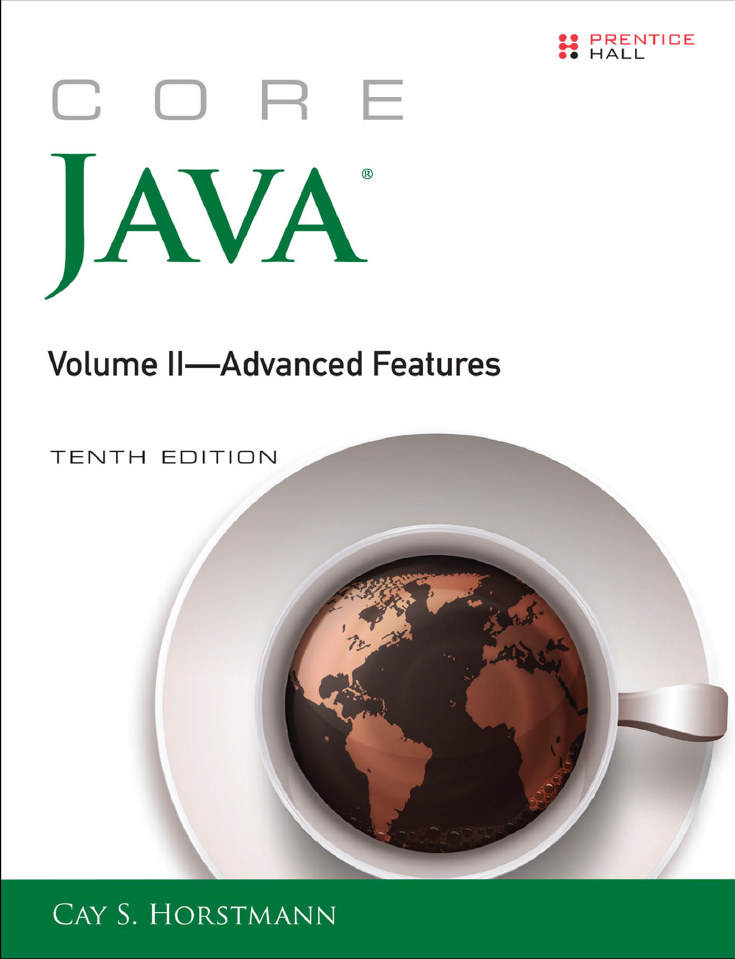
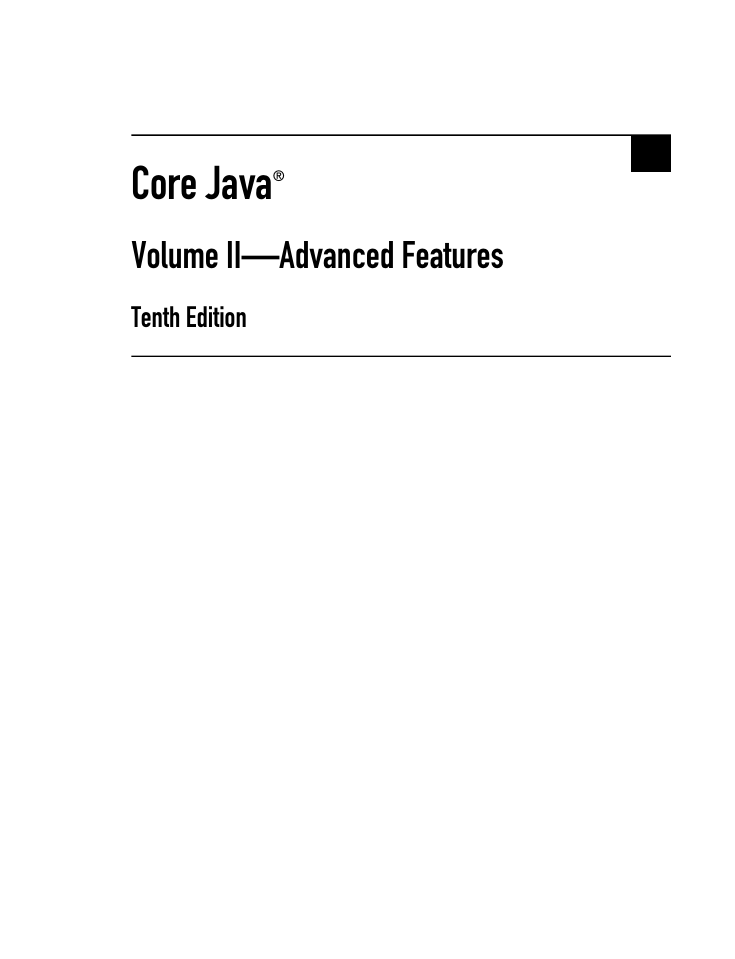
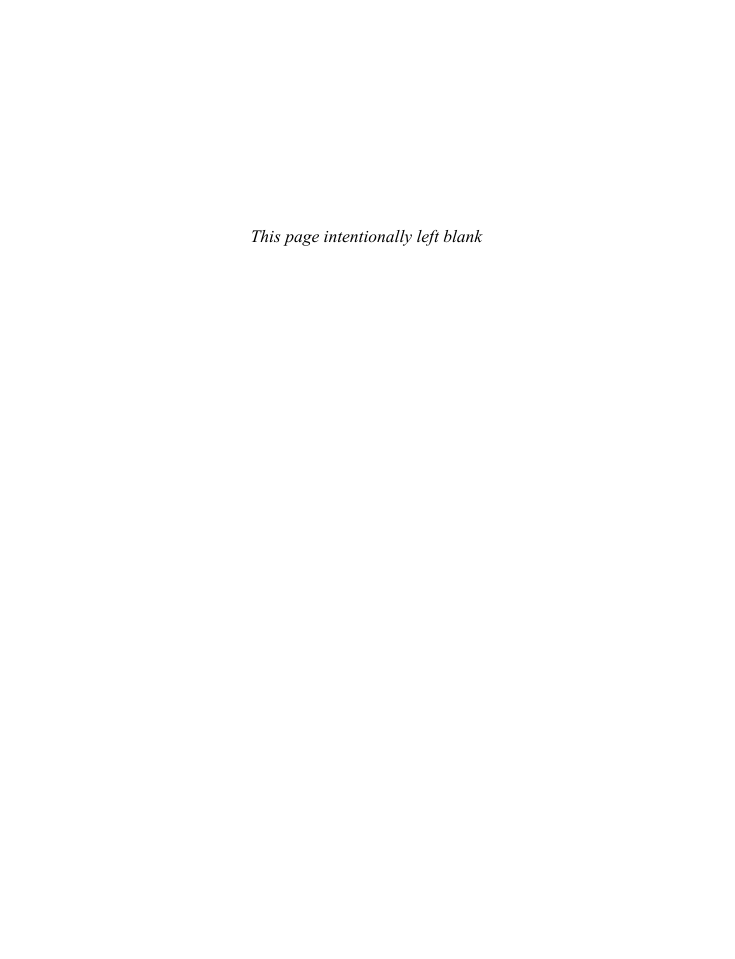
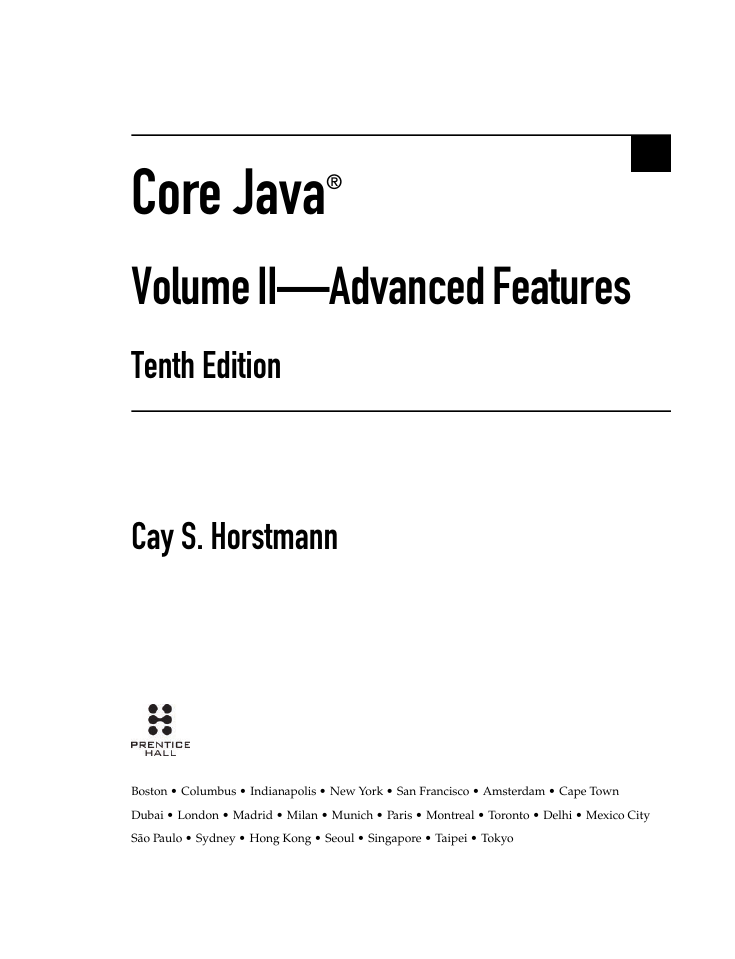
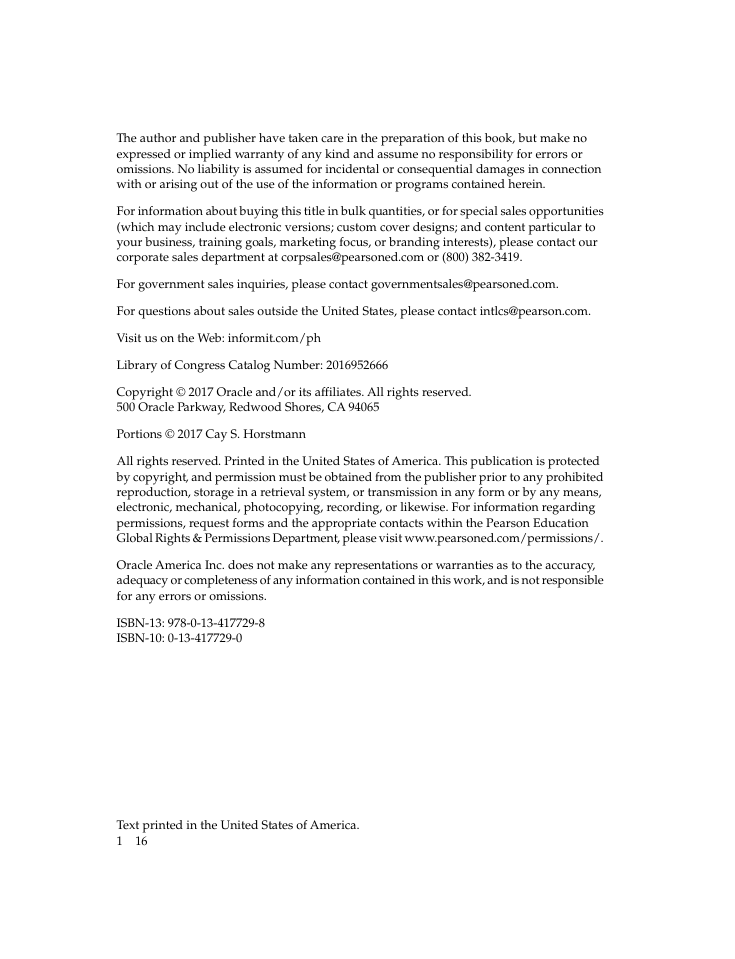
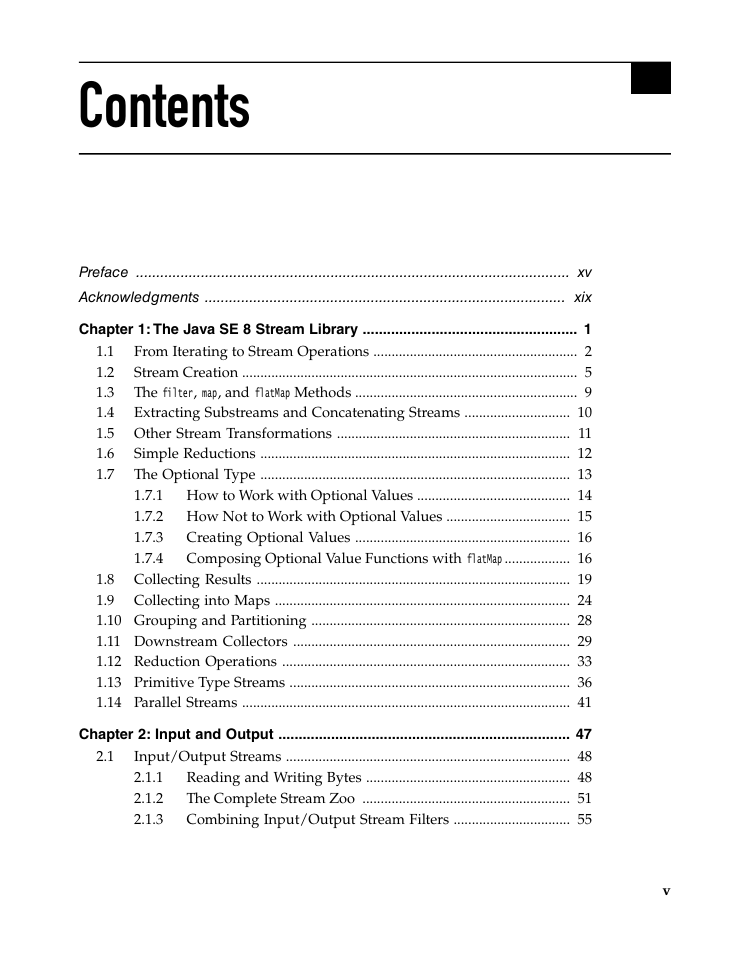
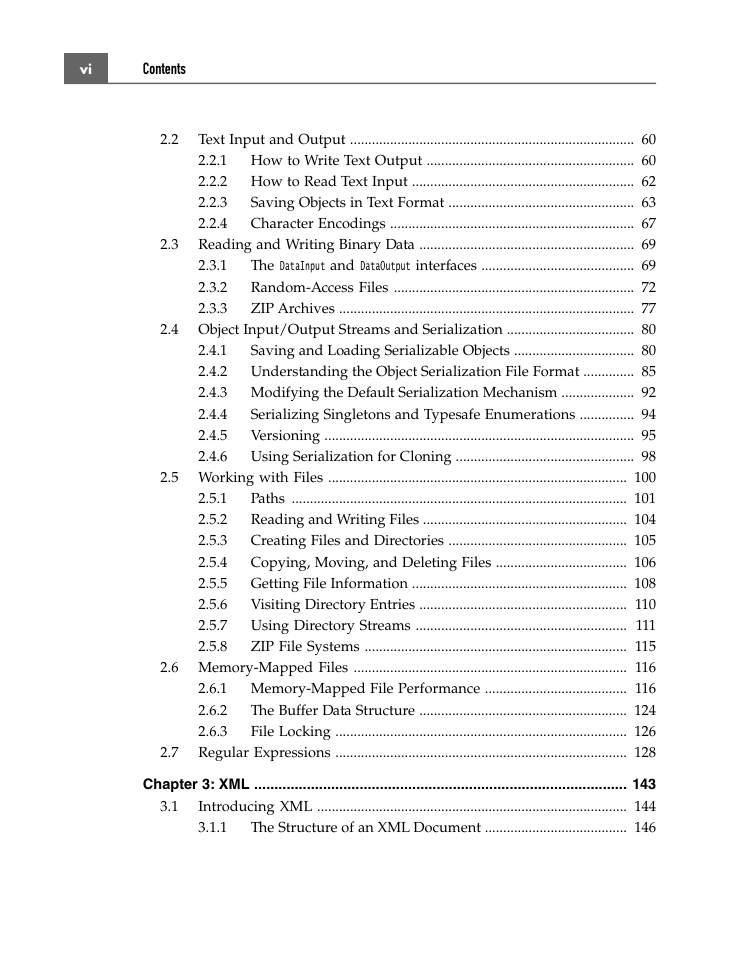
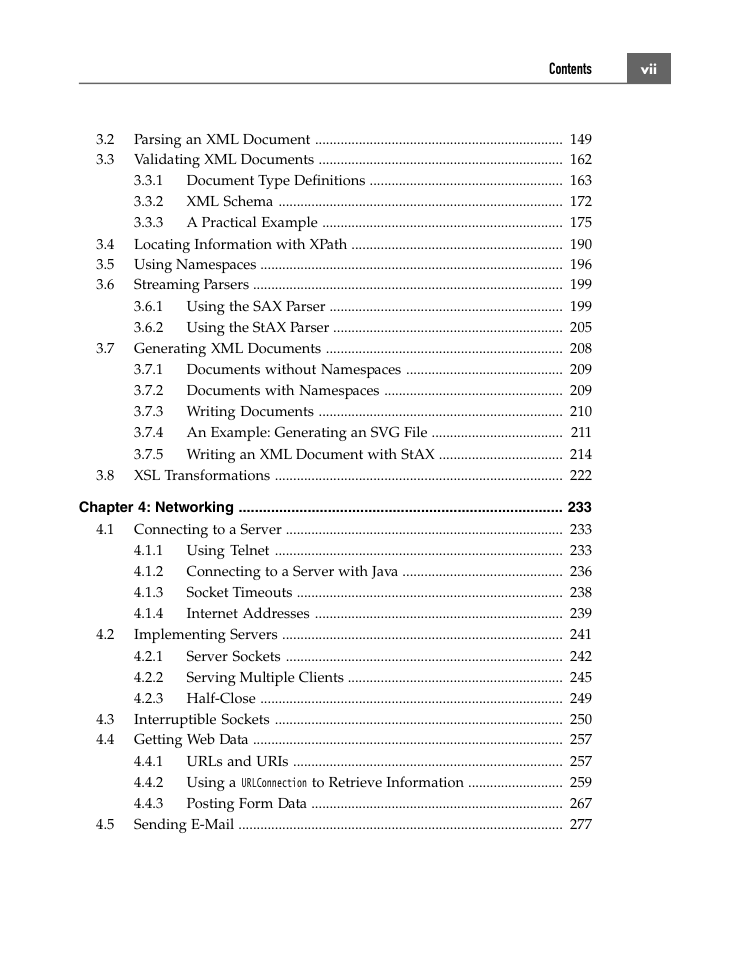








 2023年江西萍乡中考道德与法治真题及答案.doc
2023年江西萍乡中考道德与法治真题及答案.doc 2012年重庆南川中考生物真题及答案.doc
2012年重庆南川中考生物真题及答案.doc 2013年江西师范大学地理学综合及文艺理论基础考研真题.doc
2013年江西师范大学地理学综合及文艺理论基础考研真题.doc 2020年四川甘孜小升初语文真题及答案I卷.doc
2020年四川甘孜小升初语文真题及答案I卷.doc 2020年注册岩土工程师专业基础考试真题及答案.doc
2020年注册岩土工程师专业基础考试真题及答案.doc 2023-2024学年福建省厦门市九年级上学期数学月考试题及答案.doc
2023-2024学年福建省厦门市九年级上学期数学月考试题及答案.doc 2021-2022学年辽宁省沈阳市大东区九年级上学期语文期末试题及答案.doc
2021-2022学年辽宁省沈阳市大东区九年级上学期语文期末试题及答案.doc 2022-2023学年北京东城区初三第一学期物理期末试卷及答案.doc
2022-2023学年北京东城区初三第一学期物理期末试卷及答案.doc 2018上半年江西教师资格初中地理学科知识与教学能力真题及答案.doc
2018上半年江西教师资格初中地理学科知识与教学能力真题及答案.doc 2012年河北国家公务员申论考试真题及答案-省级.doc
2012年河北国家公务员申论考试真题及答案-省级.doc 2020-2021学年江苏省扬州市江都区邵樊片九年级上学期数学第一次质量检测试题及答案.doc
2020-2021学年江苏省扬州市江都区邵樊片九年级上学期数学第一次质量检测试题及答案.doc 2022下半年黑龙江教师资格证中学综合素质真题及答案.doc
2022下半年黑龙江教师资格证中学综合素质真题及答案.doc